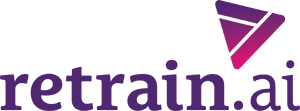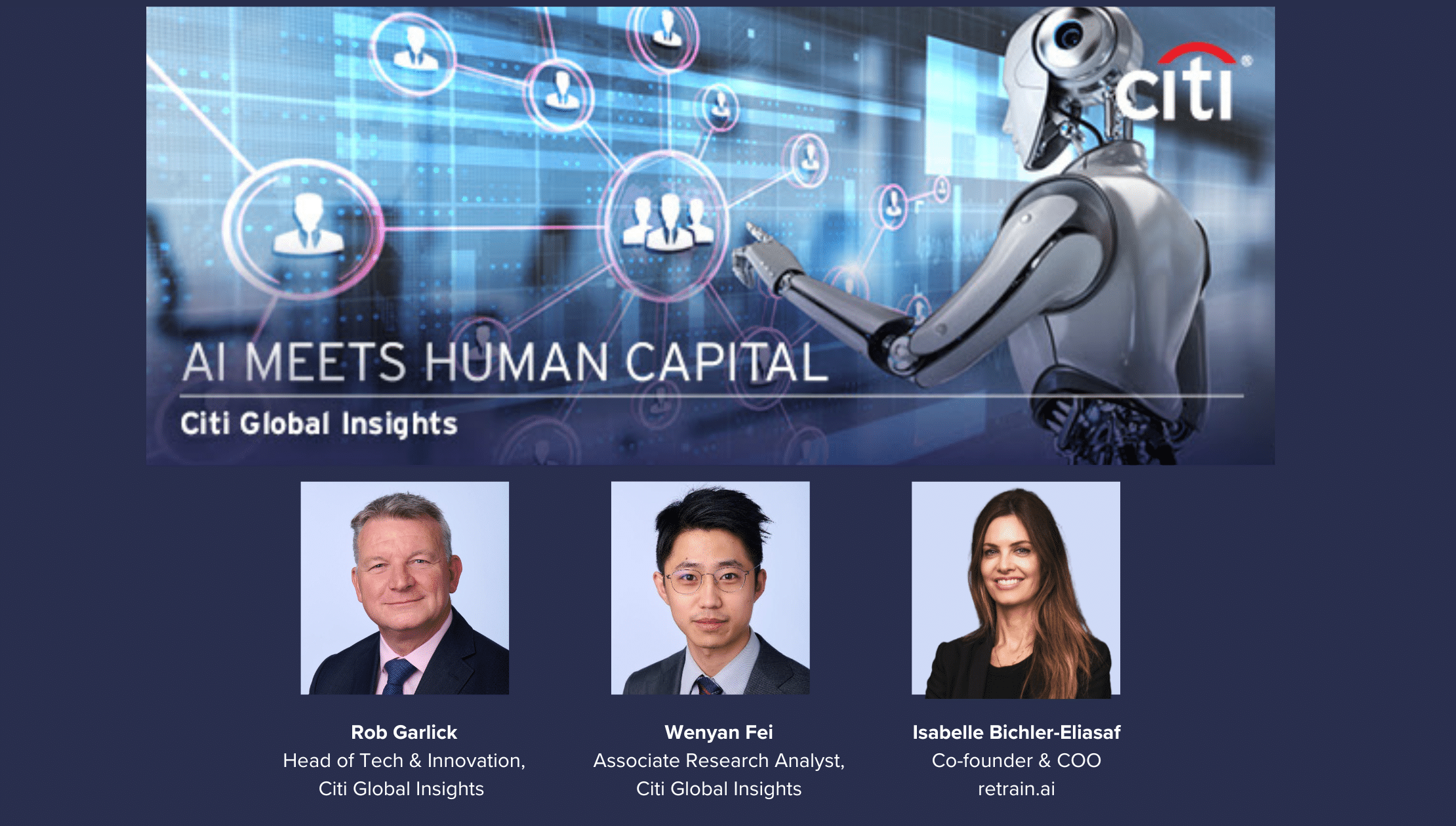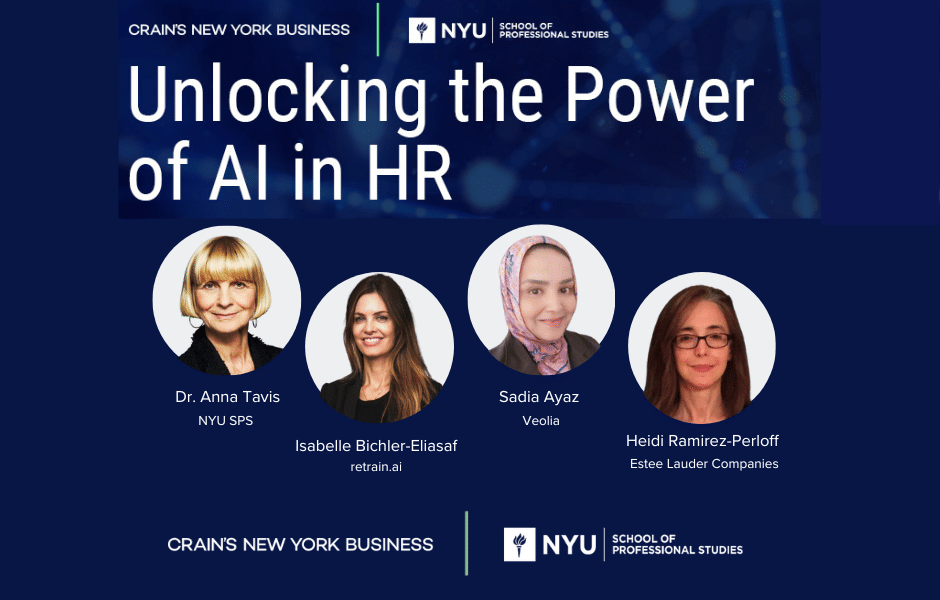retrain.ai Co-founder and COO Isabelle Bichler-Eliasaf was recently invited to speak with Rob Garlick and Wenyan Fei from Citi Global Insights for a webinar entitled “Are Talent Intelligent Platforms the Solution to Reskilling and Upskilling?”
Below is the first of a two-part blog series highlighting excerpts from their conversation. You can also view a recording of the full session here.

What is a Talent Intelligence Platform? What is the technology that’s been transformed by AI to make upskilling possible?
Talent intelligence is really one of the biggest successes when it comes to AI for HR use cases. Talent Intelligence Platforms bring together all the relevant internal and external data sources into one useful tool to create a holistic view of a company that empowers decisions about talent or workforce planning. It’s really a merger between people analytics, market insights, market trends and workforce planning.
If you’re looking at the system of records–HCM or ATS–AI makes them smarter. Why? Because it answers the most critical questions of recruiters: Who should they hire? What are the criteria based on skills, but not just basic skills? What is the experience required? This informs the recruiter as to who they’re looking for. With AI, they can take an omnichannel approach to sourcing candidates from two different pipelines: External sources, plus internal talent that may warrant a fresh look based on skills that are in demand now or that are emerging. HRs are able to hire much more efficiently by broadening the talent pipeline and looking at potential, not just unrelated qualifications and job titles. This is how talent intelligence is informing and empowering those HCM and ATS HR flows.
It’s my understanding that this is the same transformation technology that lies behind the large language models. If you don’t mind, maybe just contrast today’s tech with some of the legacy HR systems that create challenges for companies in terms of being able to extract data.
What really has enabled us to bring increased efficiencies for retention and faster hiring and so forth are those models, of course, plus there’s been exponential growth–a leapfrog really–in AI This is because there’s much more data to train our models upon. In just the last two years, 90% of the current data was generated; that’s how big the computing power is now. It’s also been cheaper so we’re able to train better and more efficiently.
At the most recent HR tech conference in Las Vegas, analyst Josh Bersin recognized our work and categorized companies in AI into three types of companies. There are companies that are now adding AI into their flows, like adding a chatbot. Then there are companies such as SAP Oracle that have a lot of transactional data about candidates and employees and are now running some models to predict what would be a good fit, or what would be the next course an employee should take. Then there are the new types of companies such as ours that are built from the start on AI. We are the companies using neural networks. retrain.ai is using 1.8 billion data points and counting from all different sources to support HR flows; so it’s not just going to give an understanding of what you have in your company but also the ability to benchmark that against the market.



